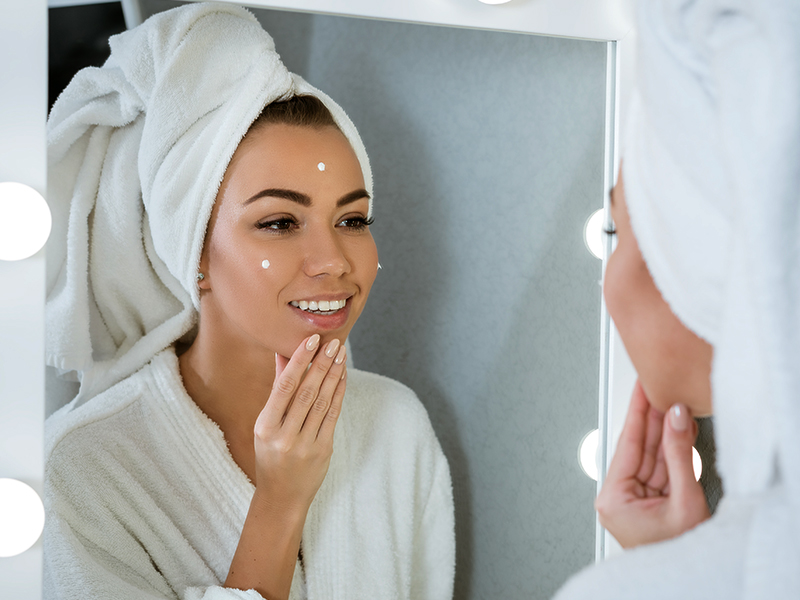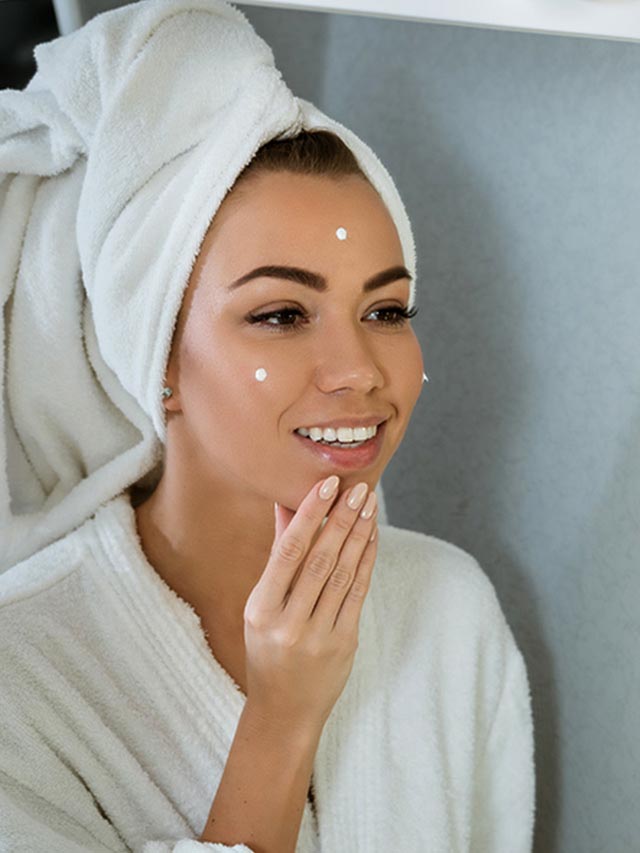Look in your beauty cabinet, and chances are you have multiple products in your skincare reserve. Hyaluronic acid is the ultimate hydrator. Retinol is a must for anti-ageing. Vitamin C is an essential brightener. SPF is non-negotiable. But is there a right or wrong way to apply them? How do you best layer them up to maximise their benefits? Once armed with the products that make up your routine, learn from an expert’s definitive guide. Having tired & dull skin? Check out these quick and easy tips on how to manage your dull skin.
TC46 connected with Dr Smriti Naswa Singh, Consultant Dermatologist, Fortis Hospital, Mulund to guide us through the process of layering beauty products. Here she shares the importance and steps of a perfect beauty regime.
1. Correct sequence ensures product delivery into the skin
The sequence of using skin products matters because that will ensure product delivery into the skin. For example, if we apply lighter serums after heavier moisturizers, they might not get absorbed into the skin and won’t give the desired results. A basic skin routine for everybody (even a minimalist) is a face cleanser (according to skin type), a moisturizer and sunscreen. They are a must for everybody.
Here are 8 must-know facts about using sunscreen, straight from a Dermatologist.
2. Steps to layer your skincare products
- One should apply lighter products before the heavier products.
- One should cleanse the face first to remove any oil, dirt, grime or make-up.
- This should be followed by any light serum (containing Vitamin C and Hyaluronic Acid) which is powered with antioxidants, nutrients for the skin and makes the skin supple.
- Post this, a spot treatment cream should be applied for the targeted therapy which can be on acne, blemishes, or any other problem one is facing. (This can be chucked if a person is not having any specific skin problem).
- An undereye cream comes along with this. Undereye creams or serums being lighter need to be applied before moisturizers as the moisturizers are heavier and thicker. Also, the under-eye skin is lighter and thinner than the other facial skin.
- In the morning, sunscreen should be applied on top of the moisturizer and makeup should come last.
3. Let the product totally blend in the skin before moving on to the next layer
There is no thumb rule with regards to the wait time. The idea is to let the product totally blend in the skin before moving on to the next layer. Usually when the skin feels dry after the application of a product, one can go for the next step. In general, it takes 30-60 seconds for a formulation to absorb into the skin. Some products like serums, cleansers and toners don’t need any waiting period, as they absorb almost immediately.
On the other hand, sunscreens, anti-acne creams, and spot treatments take a bit longer to gel into the skin. Sometimes the sunscreens make a white layer on the skin, one can wait for anywhere between 1-5 minutes for it to settle into the skin before applying the makeup. Some people prefer to apply sunscreen, get dressed for the day or have their breakfast and then apply the makeup. This also is important because one should apply sunscreen 15-20 minutes before going out in the sun.
4. Different guides for daytime and nighttime regimen
Use the products on the face and neck both, for uniform skin tone and texture.
AM Routine:
- Cleanser
- Toner or Essence (optional)
- Serum for the face (3 drops)
- Moisturizer
- Sunscreen (2 finger lengths for face and 1 finger length for neck)
PM Routine:
- Makeup remover
- Cleanser
- Under-eye cream/serum (1 drop)
- Serum for the face (3 drops)
- Night cream or Spot Therapy (targeting your area of need like acne, pigmentation, anti-ageing like Retinol) (pea-size amount)
- Moisturizer (needed with retinol to prevent dryness, otherwise optional if your night cream is hydrating enough)
Here is your 8 point guide to using retinol, according to Dermatologist Dr Kiran Godse.
5. Ingredient combinations you need to avoid
- One should not use Vitamin C with Retinol
- Vitamin C shouldn’t be used with Alpha and Beta Hydroxy Acids
- Retinol or Retinoids shouldn’t be used with AHA and BHA to prevent dryness
Between brightening dark spots and protecting against UV damage, there’s a lot vitamin C can do for your skin. Get answers to all your questions about this trending skincare ingredient here!







